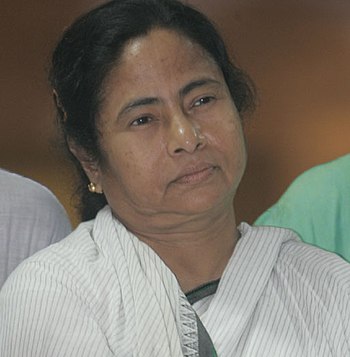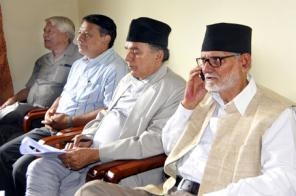 |
| English: Trinamool Congress chief Mamata Banerjee attends a news conference in the eastern Indian city of Kolkata September 7, 2008. (Photo credit: Wikipedia) |
ठमेल: Mini India?
#GoHomeIndianMedia
Even since the #GoHomeIndianMedia Twitter trend, I have been on a lookout for video clips that were supposedly offensive. Let's look at
this one. My first observation was a racist hatred of Indians is the primary ideology of the elite in Kathmandu, with the
Madhesis of the Terai plains bearing the full brunt of it, and this Twitter trend was that same vitriol surfacing onto social media.
भारतीय मिडियालाई नेपालबाट लखेट्नु पर्छ #GoHomeIndianMedia भनेर त्यसै भनेको होइन रहेछ... हेर्नुहोस् भिडियो...
I am not offended. I see a few inaccuracies here and there, but I don't see any malice.
India is a democracy.
China is not. India is close to
Nepal, China is not, geographically speaking. Ordinary Indians were much more interested in the earthquake. The Chinese in Beijing and Shanghai were less interested. Not because they are less human and less caring, but because they are too far. The US media gave major coverage to Haiti in 2010, and that is why $13 billion was raised for Haiti. The US media did not give the same kind of coverage to Nepal, and so Nepal raised less than 50 million in America. The
Indian media's 24/7 coverage was good for relief and reconstruction. That is what prompted
Mamata Banerjee to send 100,000 tents, the most needed item at the time. The Indian media is Indian. They cater to an Indian audience. Why are you offended that the Indian media is interested in
Baba Ramdev and in
Narendra Modi. Modi, FYI, is a duly elected Prime Minister of India who got a majority after a long break of 30 years. The India media is interested in Modi because the
Indian people, the Indian audiences, are interested in Modi. Several European countries thanked Modi for what he did in Yemen. I have not heard any Nepali politician or organization thank Modi. For both India and China, this has been the largest relief operation they ever carried out outside their own countries. There is no need to minus the Chinese work. But you have to be really cynical (and racist) to try to play China against India at this time of tragedy, especially at a time when China and India themselves are not interested in that. They realize this is a time of tragedy. Even at a time of peace they both just want Nepal to develop. This China-India game is the smokescreen of the corrupt elite in Kathmandu. It is used to distract the Nepali people from corruption, mafia raj, and sheer incompetence.
Stung by its neighbour's reaction, India plays it cool after 2nd quake hit Nepal
नेपाली मीडिया नेपाल और नेपाली के बारे में बात करती है, किसी नेपाली को बुरा नहीं लगता। इंडियन मीडिया इंडिया और इंडियन के बारे में बात करती है तो इस बात का किसी नेपाली को बुरा लगता है तो वो नेपाली बेबकुफ़ है।














































